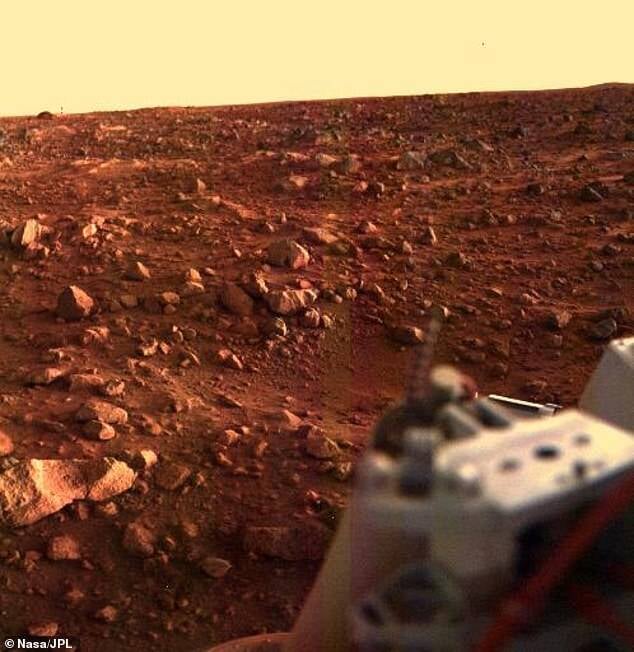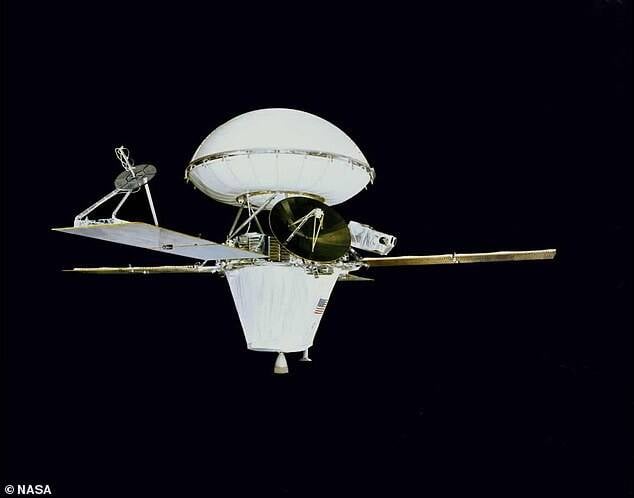When NASA's Viking landers conducted biological experiments on Mars in the 1970s, they reportedly found positive evidence of life — but may have accidentally drowned it in the process.

NASAA photo of Mars taken by one of the Viking landers in 1976.
In the 1970s, NASA sent two Viking landers to Mars to search the planet for signs of life. Now, astrobiologist Dirk Schulze-Makuch claims the landers did, indeed, find evidence of microbial life forms on Mars — but may have accidentally destroyed them in the process.
“I dropped a suggestion that some people surely will find provocative: that we already did find life on Mars nearly 50 years ago — but that we inadvertently killed it,” Schulze-Makuch, a planetary habitability and astrobiology professor at the Technical University Berlin in Germany and a former fellow at NASA’s Goddard Space Flight Center, writes for Big Think.
The Viking landers, a pair of NASA space probes equipped with both imaging technology and instruments to test for life, touched down on Mars in 1976. There, they began conducting a series of biological tests that to this day remain the only experiments to test for life directly on another planet.
Unfortunately, these tests saw contradicting results that have baffled researchers for decades.
For example, one of these tests found trace amounts of chlorinated organics. At the time, these organic materials were assumed to be the result of contamination from Earth and dismissed as, at best, inconclusive evidence of life.
But after subsequent explorations, like those by the Phoenix lander and the Curiosity and Perseverance rovers, scientist now know that those chlorinated organics are indeed native to Mars.

NASAOne of the Viking space probes in 1976.
Schulze-Makuch believes that the very processes used to carry out the tests may have destroyed any evidence of life, perhaps accounting for the experiments’ confusing results.
He says one of the tests involved adding water to samples of Martian soil to test it for evidence of metabolism and photosynthesis; scientists were operating under the assumption that life on Mars would be similar to life on Earth, which needs exposure to water to survive.
But Mars is an incredibly arid planet. Schulze-Makuch said that although the dampened soil was “positive for life,” the introduction to water may have ultimately drowned the organic microbes, which had likely adapted to the dryness of their habitat.
“It would be as if an alien spaceship were to find you wandering half-dead in the desert, and your would-be saviors decide, ‘Humans need water. Let’s put the human in the middle of the ocean to save it!'” he writes.
Indeed, in these tests, evidence of life was stronger in the dry control run, in which water was not added to soil samples.
Now, Schulze-Makuch suspects Mars may be home to dry-adapted microbial life forms containing hydrogen peroxide, which would allow the cells to draw water from the atmosphere.
While hydrogen peroxide is most often associated with the highly concentrated forms used for cleaning and sterilization, many microbes in the human mouth produce it naturally, and some insects use solutions containing hydrogen peroxide as a defense mechanism.
This theory might help explain another of the Viking experiments, which involved heating soil samples to separate their materials. Recent analysis suggests this process may have incinerated the organic material the experiment was designed to find.
If the Martian cells contained hydrogen peroxide, Schulze-Makuch explains, the heat would have not only killed them, but caused the hydrogen peroxide to interact with nearby organic compounds, yielding carbon dioxide — which is likely what Viking instruments were detecting.
In short, Schulze-Makuch argues that the processes used to test soil samples for life on Mars — and which were used to claim there was no evidence of it — may actually be responsible for the lack of evidence. And he is not the only one who has made that claim.
According to the Daily Mail, in 2016, experts from Arizona State University and the National Institute of Health released a study claiming the Viking findings are “consistent with a biological explanation” that life on Mars adapted to survive its dry environment.
In the study, researchers injected Martian soil samples from the Viking landers with nutrients and stored them in the dark for two months. Researchers found that the Martian soil’s response was extremely similar to that of terrestrial soil.
Shulze-Makuch says these new findings suggest the need for another mission to Mars — with the primary purpose of detecting life.
“I cannot wait for such a mission to get under way,” he said.
After reading about the possibility of life on Mars, check out these 29 pictures of Mars that will blow your mind. Or, read about how NASA may have prevented the Challenger explosion.





